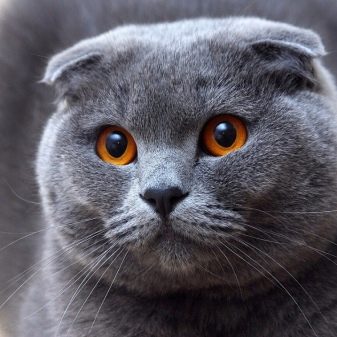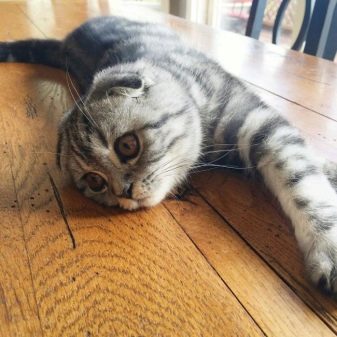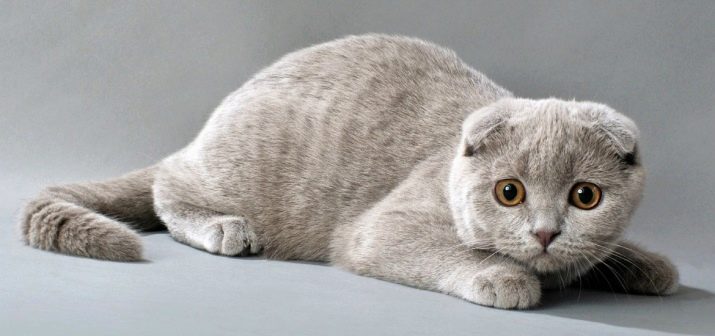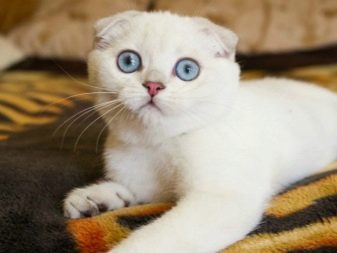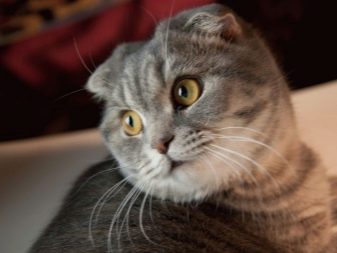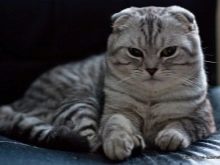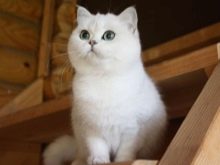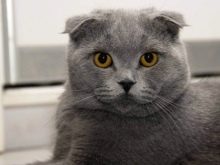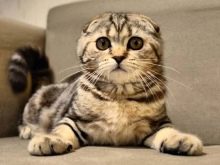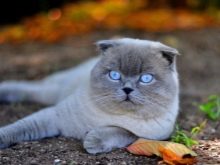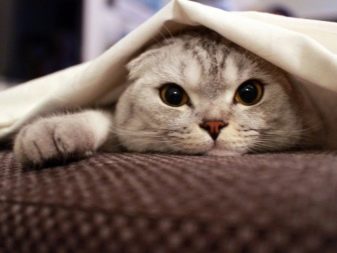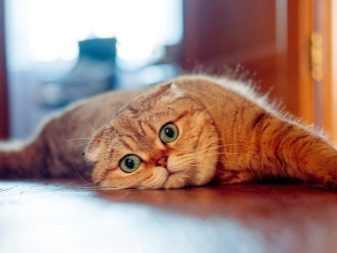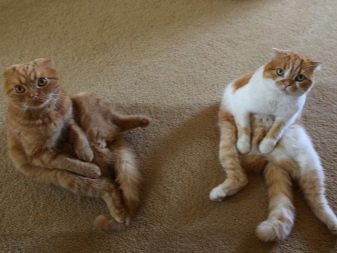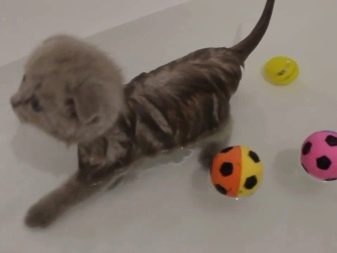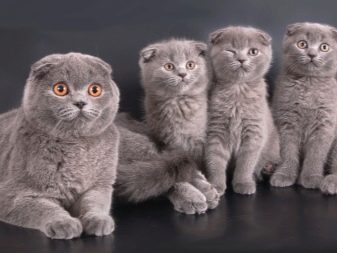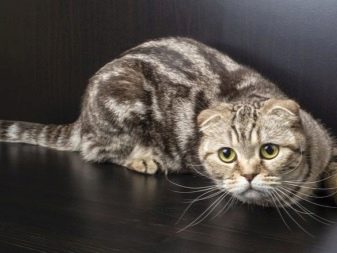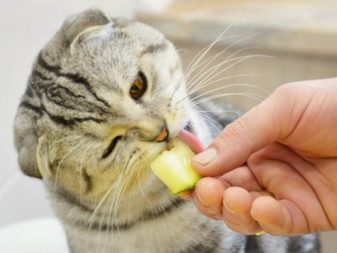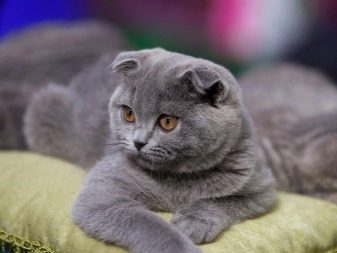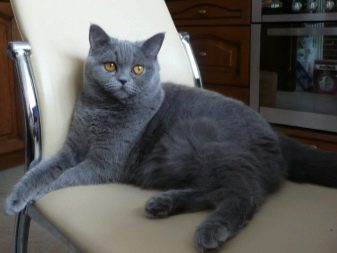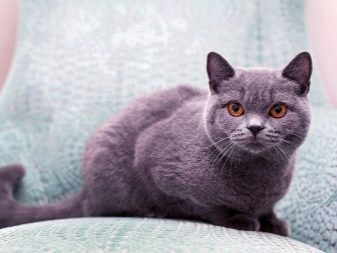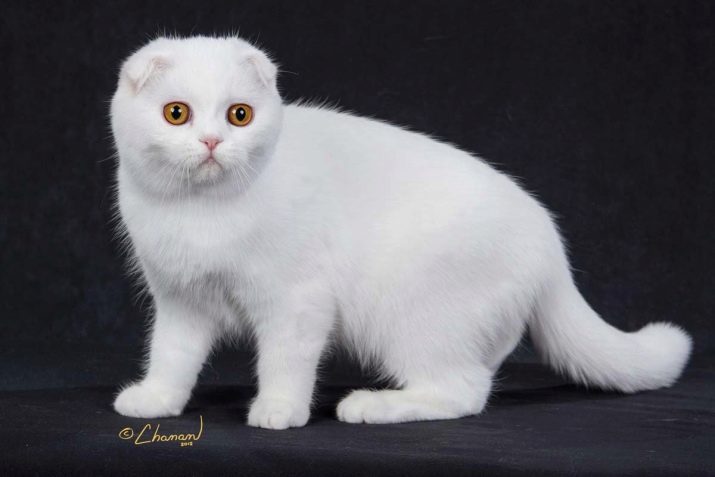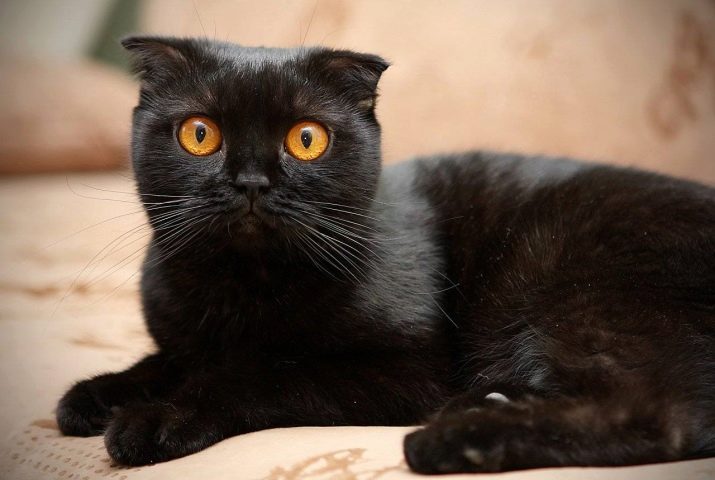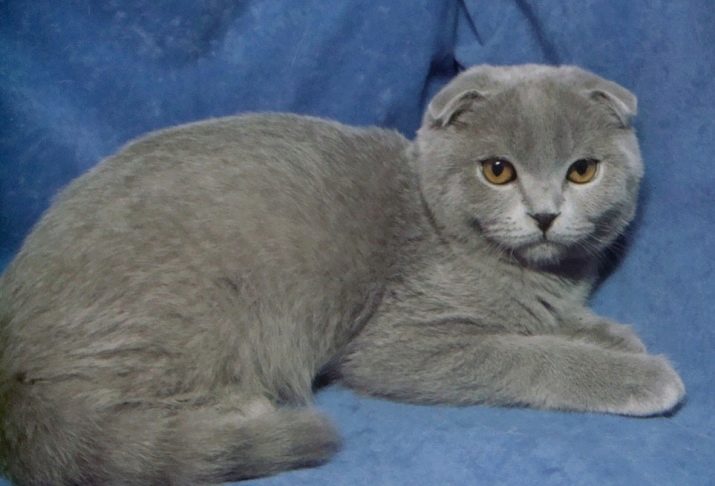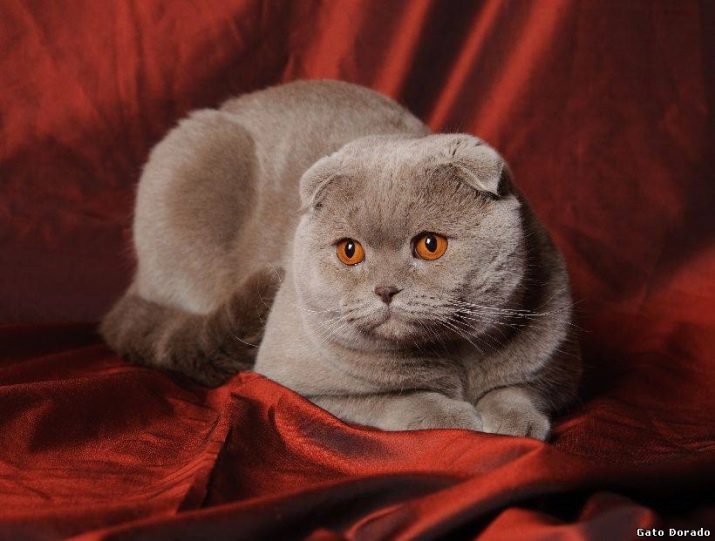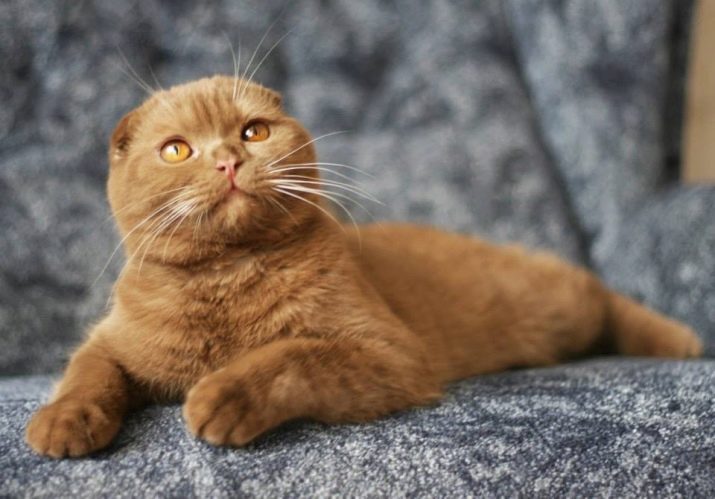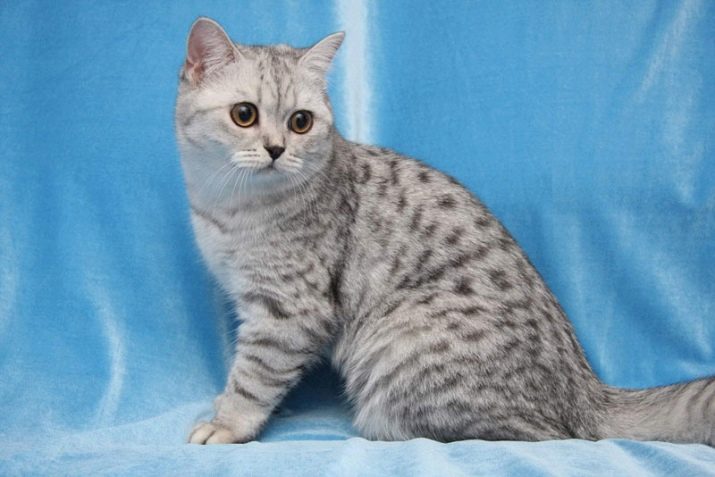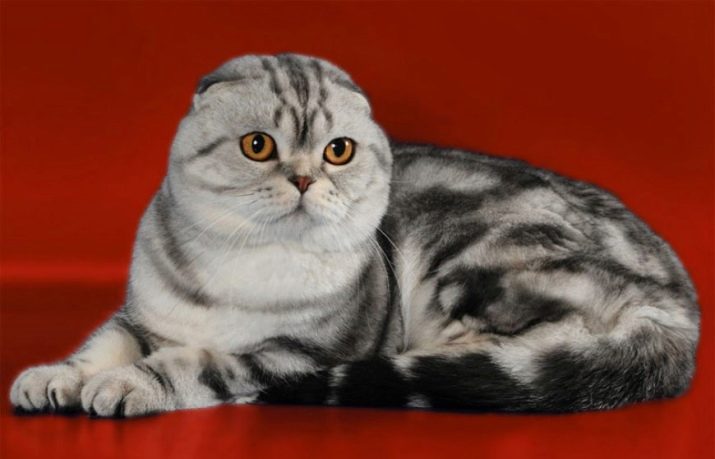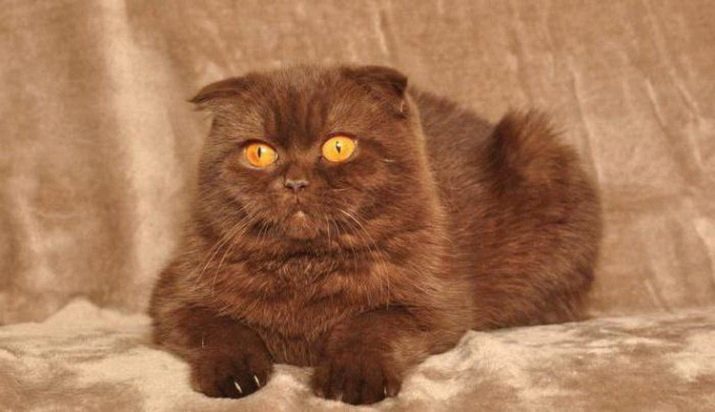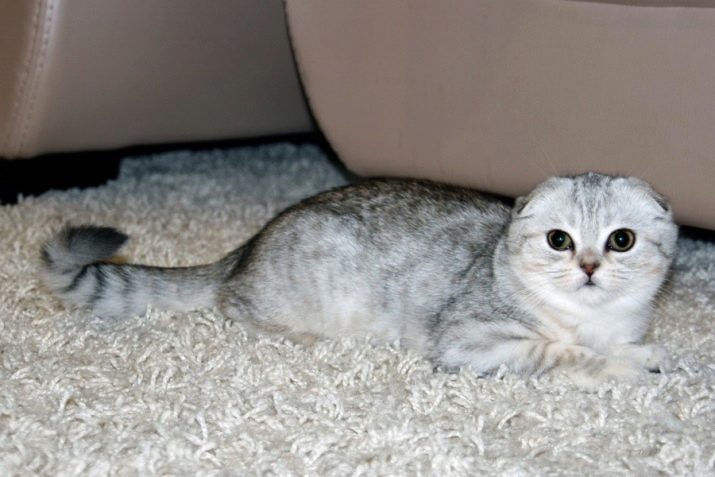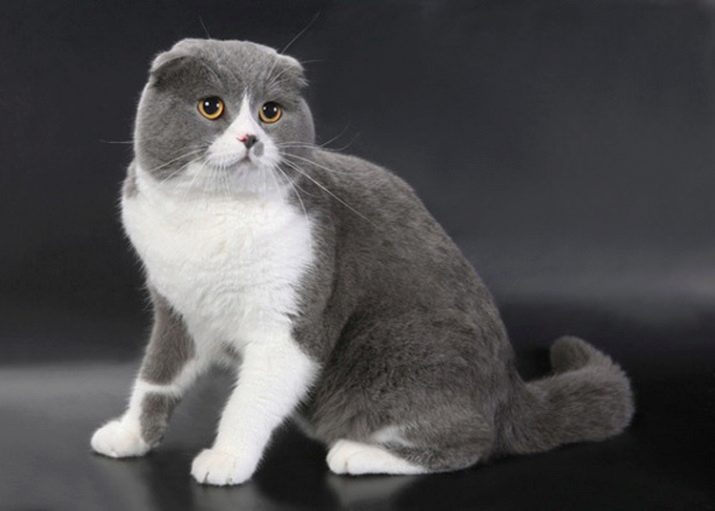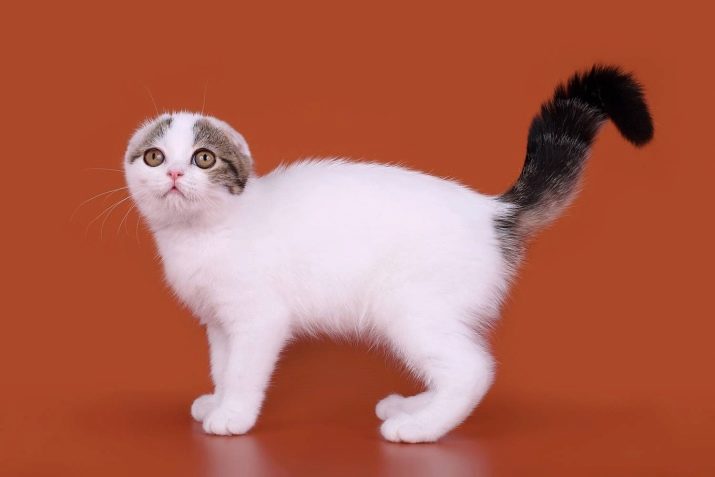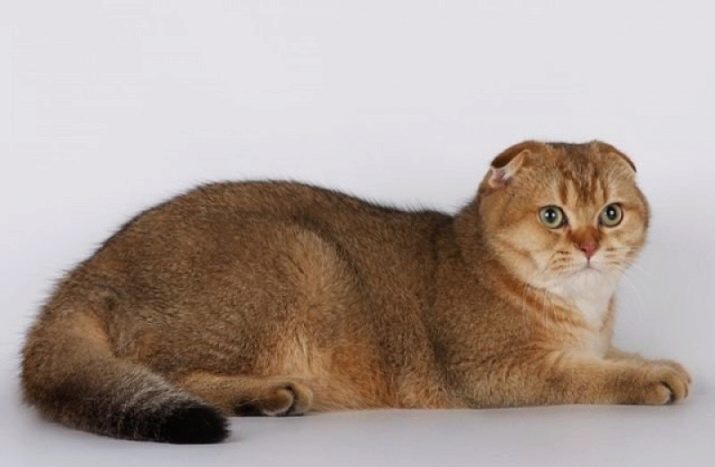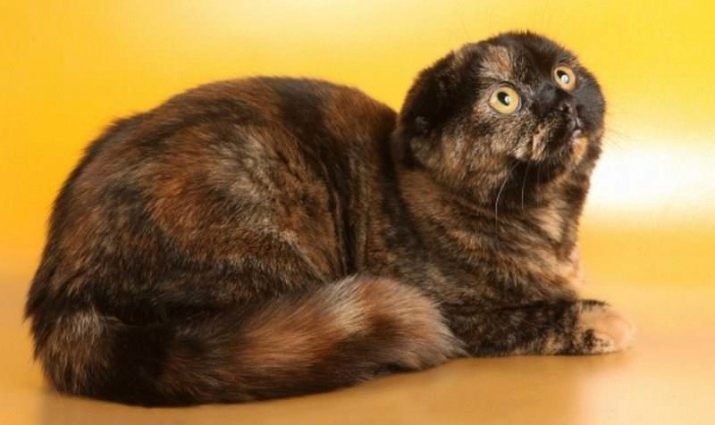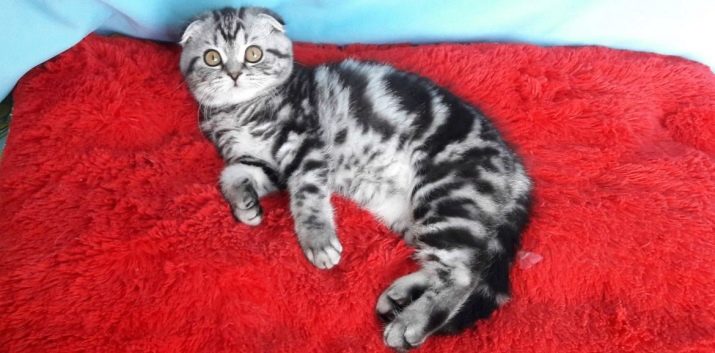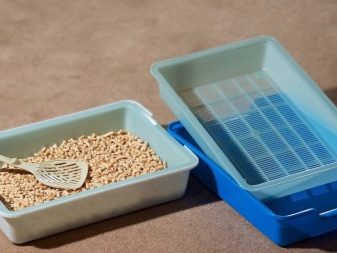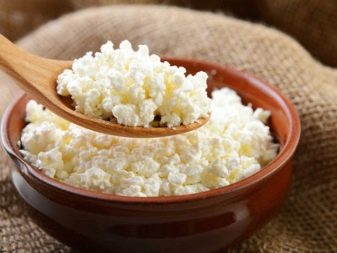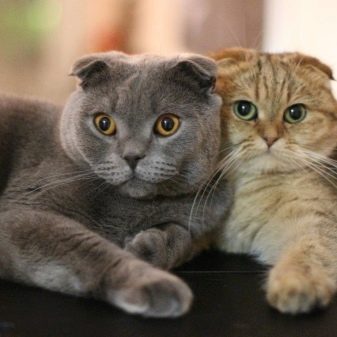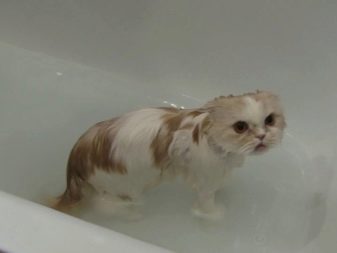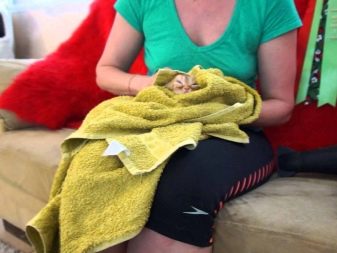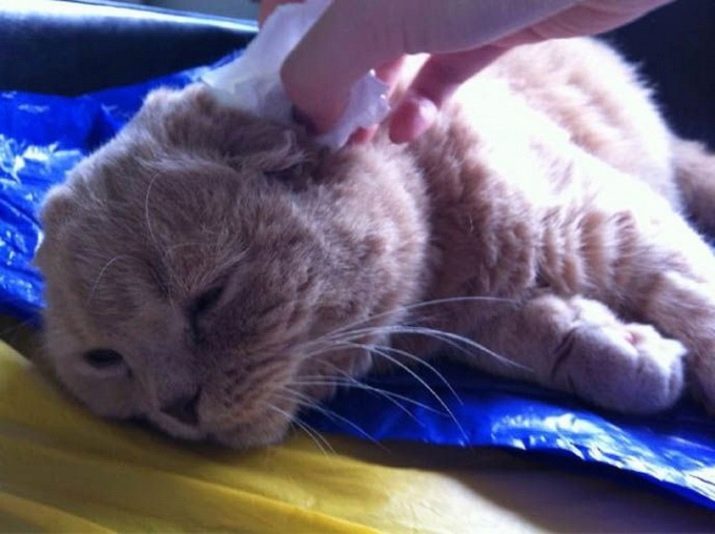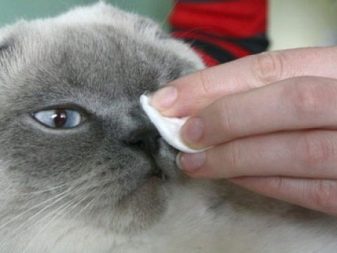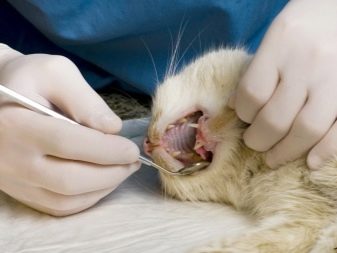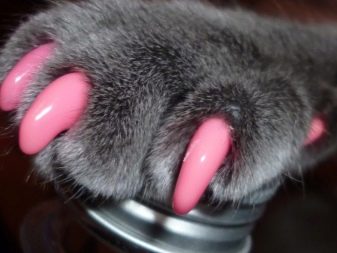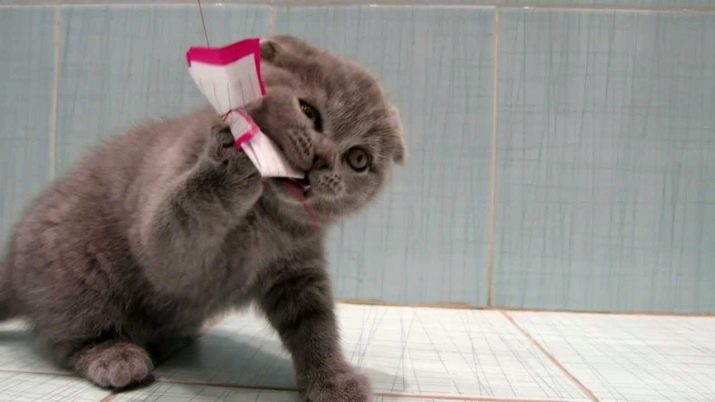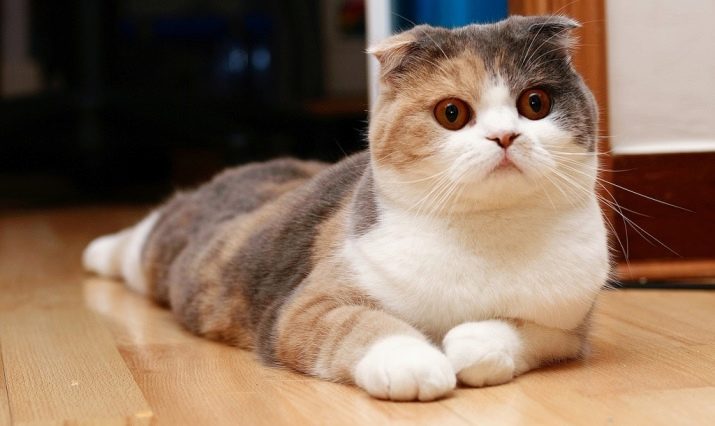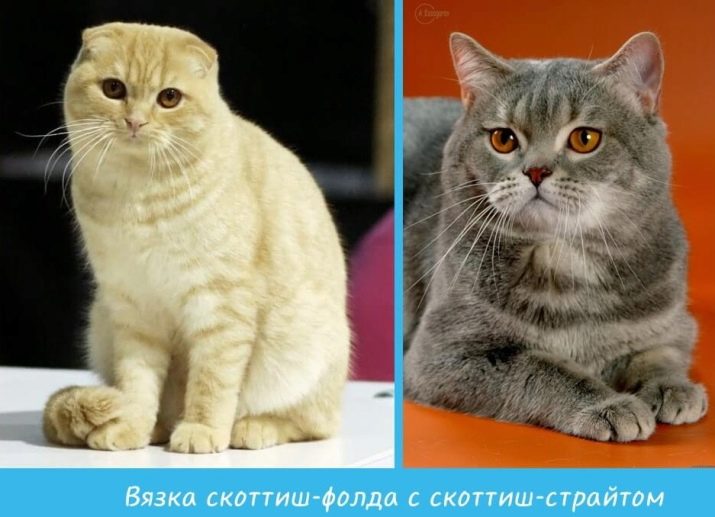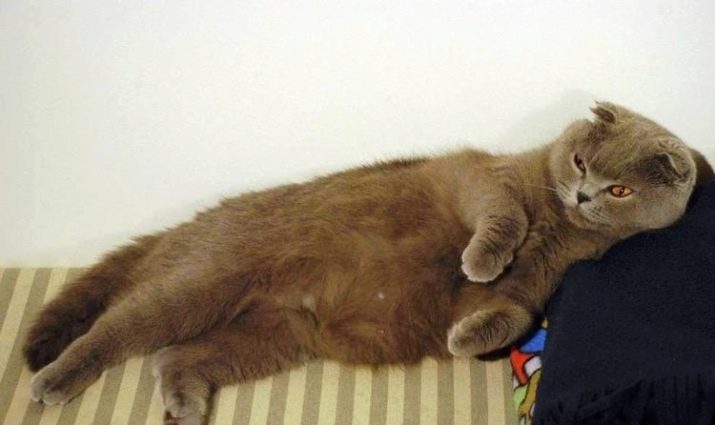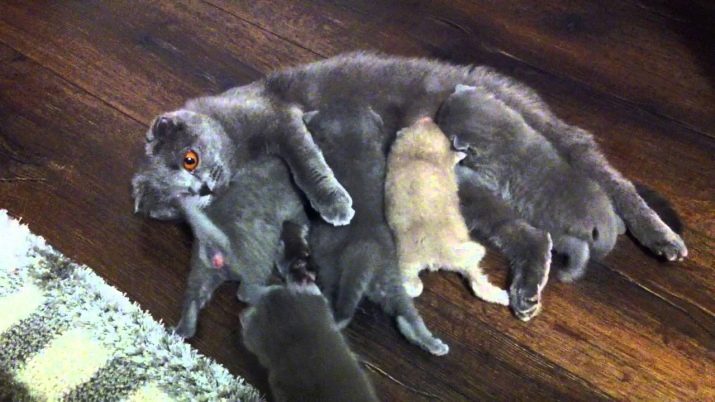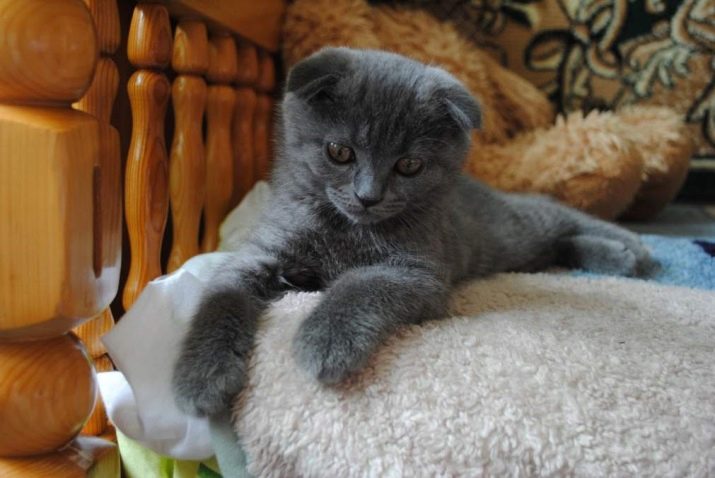The Scottish Fold cat is easily distinguished from other breeds by its unique drooping ears. Initially, such ears were considered a defect of a cat, and animals did not enjoy the love of their owners, but over time everything changed. In 1974 there was the first exhibition of the breed in the United States, which ended with a great delight of spectators and felinologists. In Russia, the Scots are just beginning to gain popularity among fans and breeders. Let's take a closer look at the history of the appearance of these unique cats, their characteristics, the nuances of keeping animals at home.
History of origin
Lop-eared cat or Scottish Fold - is a native of Scotland, it was there that she eventually entered the territory of the United States, and then to Europe. For Russia, the breed is still exotic, it has not yet gained sufficient popularity.
The history of fold cats begins in Eurasia. In the XIX century, animals are first mentioned in literary works, in particular, describes the time of bringing to England from China kitty, looks very similar to the Scottish breed. Another source of mention of the animal is the magazine "World Knowledge and Hobbies" of 1796, which also contains information about a cat exported to Europe. But as far as this information is true, it is difficult to say now, since the trail of these cats has been lost.
On the Scottish islands themselves, the breed was first mentioned in 1961. It was at this time that farmer William Ross saw a neighbor with a cat with bowed ears, called her Suzy. Suzy was born from ordinary cats, without any changes in external signs, only later it turned out that hanging ears are a sign of a gene mutation. A few years later, Suzy's cat brought a litter that contained just a couple of kittens with a characteristic ear shape. At the request of his wife William, one baby was given to the farm, and from that moment began the history of breeding unique cats.
In 1970, the name Scottish Fold was officially assigned to the breed, and the Ross family, actively engaged in breeding such cats, turned to genetic scientists for help. This is how the nursery Denisla appeared. In 1972 for the Scots came the dark period of their history. At this time, a ban on breeding cats of this breed. The reasons for the ban were related to the peculiarity of the structure of the ears of cats, which caused difficulties in the treatment of the auricle from the ear tick. In addition, the problem was the appearance in the litter of snow-white kittens with blue eyes, which were mostly deaf.
At the moment, these problems are irrelevant and almost completely eliminated, however, in England itself, the Fold Scottish breed is not officially recognized to this day. But you can breed it. The presence of the fold (or fold) gene has led to the refusal of the breed to enter some countries of the world. This gene is responsible for the creation of anomalies in the development of the skeletal system. To avoid this, genetics have found a way to properly select animals for crossing. The main postulate was that Fold cat can never be knit with cats with lowered ears.
The kittens brought in the litter from two healthy parents are divided into two groups: Scottish Fold (lop-eared) and Scottish-Straight (erect ears). Usually in each litter there will always be one lop-eared kitten. If you want to breed cats yourself, then you can take Scottish Straights as a partner.
Since 1990, the World Cat Federation (WCF) has been engaged in the breeding and popularization of this breed.
Appearance Description
Scottish Folds, like their short-haired British relatives, are big cats. The body of the animal is squat, the body is well developed, the musculature is elastic, it is easy to feel. The neck is short, round, powerful. The head is rather large, developed, the chin is rounded, well defined, as are the cheeks. The eyes are wide open, clear, most often painted in amber shades, although there are also representatives with green and blue eyes.
The main feature of the breed - the ears. They droop, with their tips touching the head from the side of the eyebrows, tightly pressed. The tail is long, narrowed to the tip, mobile. Paws are large, powerful, quite fluffy.
The hair of the animal looks like plush, can be short and long, but always with a thick undercoat.
Color options are varied: from pure colors to mixing shades and patterns. There are cats with tortoiseshell color, tabby, smoky, silver chinchilla, marble, snow white and others. Newborn kittens Scottish Fold are born with blue eyes and already pressed, but not fully, ears, over time, the ears will bend more in the area of cartilage. Scottish Straight kittens are born with erect ears, and in no way can these ears bend. The hair of a little kitten is long, light, airy.
Character
Lop-eared Scots belong to friendly and tender breeds of cats. The nature of the animal is calm, durable, it easily tolerates the squeezing of small children. A cat will never hurt a person, will not bite or scratch him if she does not like something. Therefore, the Scot can be safely taken to the family where there is a small child.
In the house the animal does not host, does not scatter objects, does not dig the ground of their flower pots. Although it is worth noting that this breed is very playful and does not miss the chance to have fun with your favorite toy. Cats are very responsive, prefer to be in the circle of people, do not tolerate loneliness, requires communication and affection. Often spend time on the host's lap or in his bed. But at the same time remain independent creatures.
As a rule, the Scots rarely give a voice, most often purr. The animal's voice is rather creaky, a little harsh or squeaky. The cat will not wake you up at night with his songs or persistently beg for food with shouts. Scottish Fold cats are not shy, not afraid of loud or rustling sounds. Inquisitive. Easy to get along with other animals, friends with birds, dogs, chinchillas.
Advantages and disadvantages
The positive qualities of the animal include its character: the cat has a calm disposition, he is friendly. The Scotsman is hospitable, treats the person with respect.
The Scots, thanks to their extraordinary intelligence, easy to train, courage allows animals to perform at various exhibitions. A cat can be taught to serve a paw, walk on its hind legs, perform simple tricks.
Lop-eared cats are easily accustomed to the tray, endure water procedures. Some individuals swim with pleasure in open water sources.
However, the cat to the water should be taught from infancy.
Of the minuses is to highlight the price of the breed. If you are going to purchase a purebred animal, then you will have to pay an amount of up to 40 thousand rubles. Cats without pedigree are much cheaper, about 4 thousand rubles, but this does not guarantee that it is the Scot who will sell you, and not the animal with the operation performed on the ears. Moreover, such individuals may have big health problems in the future.
Other disadvantages include the health of purebred cats. Some Scots suffer from osteochondroplasia.This is a hereditary disease associated with damage to the bone tissue of the joints, cartilage, and manifested by a slowdown in bone growth. This disease can be fatal.
Other common diseases of Scottish folds: chondrodystrophy, arthritis, arthrosis. These diseases usually occur due to improper mating of animals. Therefore, before buying the animal should carefully study the pedigree of the animal, up to the progenitors of the cat. The Scots may suffer and twisting eyelids. Adult animals are subject to the development of glaucoma, cataracts.
Like all animals, the lop-eared breed may show signs of allergy, scabies or skin eczema. Deafness is also an eternal companion of the breed, it is complete or partial. Diseases of the cardiovascular and digestive systems, the bladder develop in old animals or with improper care of a cat.
To avoid all these ailments, it is recommended to visit the veterinarian at least once every six months for a general examination of animals. The first identified signs of illness are easier to cure than a neglected disease.
Lifespan
On average, a cat lives about 15 years, which is quite a long time for a pet. However, there are individuals that live to be 20 or more years old. Sterilization of the animal also affects life expectancy. Bred cats, for whatever reason, were on the street, as a rule, live to be 7 years old. The birth of a cat and the maintenance of kittens takes a lot of power from the mother, and this affects her health. The same applies to home Scots.
Another factor affecting a pet's life is hereditary diseases. The gene of looseness, although it made these cats unique, but plays a cruel joke with them, causing the development of osteochondroplasia.
Proper care of the cat, timely medical examinations and a balanced diet can prolong the life of your pet.
Comparison with British cats
Fold Scottish is not a British shorthair breed. At the beginning of its history, the individual was tied with the British, which is why the kittens received external signs from the British, and became similar to them: the coat color, its length and shape, eye color, size of the animal's body. The exterior of the British cat is different from the Scot, although the Briton is just as big, the chin and cheeks of the animal are well defined. The difference in the two rocks can be replaced in the structure of the legs. The Scots, they are more elegant and thin, long.
The easiest way to determine what breed is in front of you is to look at the ears of an animal. But keep in mind that Scots with straight ears, too, are almost no different from the British. All kittens British cats are born with erect ears. Scottish Straights belong to the Scottish breed, since only a lop-eared cat can bring them in the litter. In fact, upright ears can be partly considered the uniqueness of this breed.
Therefore it is necessary to show interest in the pedigree of the cat, because only according to these documents it is possible to understand what kind of animal is in front of you.
Pets are also distinguishable by character. The British Shorthair breed is very aristocratic and arrogant, there may be some coldness in relation to the owners. She does not tolerate affection, squeezing. All these feelings occur only with her permission, when she wants. The Scots, on the contrary, are extremely loving animals, always happy to be stroked, to play, to various events.
Lop-eared cats are not very active in the voice, but they talk to the owner of the purr. If you plant two breeds of the same color together, and start talking to them, play, it will immediately become clear who of them is who.
Types of color
Lop-eared Scots come in a variety of colors. Consider the most common colors of this breed.
- Monophonic. Monophonic colors are differently called “solid”. There are no ticking patterns on the animal's fur.
- White The coat is snow white in color, shiny and smooth. The eyes of the cat are painted in golden or blue colors. White cats can be observed heterochromia - this is when the eyes are painted in different colors. This feature does not affect the health of the animal. The nose and legs of the cat are light pink.
- Black The skin is a coal color, without hints of red, gray. Eyes stand out, they are bright, blue, yellow. The paws and nose are black.
- Blue This color is not similar to the standard blue color, the animal's hair only slightly resembles a gray-blue tint. The color is the same as the British. Wool thick, plush, evenly colored. The iris of the eye has a contrasting shade: golden, amber, slightly orange. Nose gray-blue, dark, similar to the shade of wool, paw pads of the same color.
- Lilac. Unusual color of the animal. The color is complex, difficult to pass. Externally similar to milky, but mixed with a violet hue, cold, slightly smoky. On some individuals patterns of spotty pattern can be traced. Such animals are considered the rarest. The nose is painted in the tone of the fur, as are the paws. Eyes are amber or pale, gray-blue.
- Red. Wool red, with a reddish tint. The eyes, nose and paws do not stand out in color - all in a reddish amber scale.
- Brown. Another unique color Scots Fold. Also called cinnamon or cinnamon. The coat is light brown with a reddish warm subtone. The eyes are golden. Nose and legs - brick-pink color.
- Tabby. Color tabby is characterized by the presence of a different pattern on the body of the animal. A distinctive feature - the letter "M", located on the cat's forehead, between the brow ridges. The pattern is in the form of stripes, points, blur.
- Striped. The classic pattern, made of vertical continuous thin stripes located across the skin of the animal. Departing from the back, the stripes form a tiger skin effect. On the neck they imitate a necklace in the form of wide rings, the same rings are on the tail of a cat. The tip of the tail is completely painted in a dark color. The coat color can be red, gray, white, milky. The picture is usually contrasting: black, gray or dark red.
- Spotted. As the name implies, the cat's skin is decorated instead of stripes with spots, dots. Outlines of the figure can be clear or blurred. The pattern on the paws and tail of the animal is made in the form of rings. On the back, the specks are collected in a cluster, smoothly passing onto the head of the animal. Coat color is as diverse, with the exception of pure red color.
- Marble. The bands are wide, without interruptions, like a blurred line. Externally, the pattern resembles marble, especially on a gray skin. On the sides of the line form a circle with a spot in the center, and then they diverge towards the back and paws of the animal. The tail is decorated with wide rings, the tip is completely painted. Paws in the ringlets, as well as the neck. Cat fur color: gray, red, smoky, white. The picture is dark, saturated.
- Brown. The hair of the animal has a light brown tone, the chest is usually a few shades lighter, almost milky. The bands are dark, bright. The nose and the eyes are black edged, the paw pads are black, dark brown.
- Creamy The lightest of all colors. A fur coat of a cat of a milky color, with a pale cream pattern and a little red. The nose is pink, the legs are the same. Eyes are yellow, amber. Figure spotted, the bands are weak.
- Silvery. Gray cats with a dark pattern. The bosom of the animal and the belly are lighter than the body. The color of the iris is green, blue. The nose is brown, in a small stroke. The pads are black. Figure varied. The Scots can also be distinguished color similar to the hair of chinchillas, there are several options.
- Smoky. Smoky color is like a chinchilla, but it is made in a dark scale. Animals are black, blue or cameo colors. The cat's undercoat is several tones lighter than the tip of a hair.A distinctive feature of cats with smoky color - amber eyes.
- Shaded color. Difficult type of color, expressed in two colors of hairs in certain areas of the animal's body. As a rule, these are the sides, the back, the head and the paws of the cat. Distinguish shaded color from chinchillas can be by edging the eyes. It is dark, saturated, contoured. The fur color of cats can be golden, silver and red.
- Bicolor Bicolor color is made in any color, but always with large white spots on the cat's body. These spots are located on the face of the cat, paws, stomach, thighs. The eyes of animals are bright or golden. Heterochromia is also found.
- Van This color is similar to the coloring of Turkish cats of the breed van, for which he received its name. Colored spots of black or red tone are located in the upper part of the cat's face, as if creating a brow pattern. Sometimes ears are painted, small spots appear on the sides of the animal. The tail of the cat is always painted black or red, monophonic or in the form of rings.
- Harlequin. It is expressed as a percentage of colored spots to the base tone of the coat (white). The skin of the animal is covered with spots only 1/5 part.
- Ticking Ticking is a mixture of pigmented and low-pigmented areas of wool. Wool may be light brown with a grayish tint. Eyes amber, copper. Gray colored cats have green eyes.
- Tortoise. Color is a mixture of two or three colors. At the heart of the mixture is black, complemented by gray, red and white.
Content
In general, the maintenance of Scottish Fold cats does not cause any difficulties. The main thing is to create a cozy, friendly atmosphere for the cat, feed it properly and monitor the health of the doctor. Let's take a closer look at each item.
General rules
If you took an adult cat or a kitten into the house, you should definitely designate a place for it to sleep and toilet for an animal. For a pet, you should choose soft loungers with high open sides. Also suitable bed in the form of a house. If the cat did not like the couch, and she herself defined a place to sleep, then you can cover it with a soft blanket so that the animal does not freeze, especially if the cat likes to sleep on the floor.
Cat tray is selected according to the size of the animal, with or without a grill. Open trays should be placed on special mats to prevent the filler from scattering across the floor after the cat has gone to the toilet. The filler should be purchased without flavors, so as not to provoke the development of allergies in cats. In addition, the smell of the filler may be sharp for the animal, and it will not go to the tray for its business.
It is also worth to buy various toys for the cat. These can be mice, feathers on a stick, laser pointers or interactive sets.
Nutrition
If the Scot is on a natural diet, you must carefully observe the diet. Food should be rich not only in proteins, but also in all the vitamins and trace elements necessary for cats. It is recommended to feed your pet with fresh meat: beef, chicken, turkey, you can give offal (liver, kidneys, hearts of chickens). Liver and poultry meat must be boiled before serving. Occasionally, the diet of the cat is complemented by marine fish. Fillet should be boiled, boneless, low-fat variety.
Permissible use of fermented milk products such as milk, cottage cheese, kefir. Sour cream and cream are undesirable. These products have a high fat content, which has a negative effect on the cat's digestive system, and they can also cause liver disease. Dairy products are allowed to give cats once a week. Be sure to offer the Scot cereal. The most useful are oats, millet, rice. Porridge based on them boiled without adding salt and oil.
If the cat will be on a special diet, made up of dry and wet food, then you need to buy premium or super-premium food. This product has a high quality of ingredients, it is fully balanced in content of protein, vitamins, minerals, fiber. These brands include Acana, Holistic, Grandorf and others.
When dry food should pay attention to the availability of fresh water and ease of access to it.
A bowl of water is not recommended to be placed next to the feed, it is better to move it in the opposite direction or to remove it to another place.
Grooming
Cats are clean creatures, they calmly lick themselves, try not to get dirty and behave very carefully in the house. If there is a need for bathing a cat, then the procedure should be performed. using special shampooswhich can be bought at any pet store. Bathing takes place in warm water, slowly, while the pet's muzzle should not be affected. After washing the cat, you must wrap a soft towel and squeeze the water from the wool.
The animal is placed in a warm place without drafts until it is completely dry or you can resort to using a hair dryer, provided that the animal is not afraid of it. After that, proceed to combing wool. For short-haired individuals suitable brushes with natural bristles or pikhoderki. For those who have long hair, you should use special combs.
It is best to accustom the cat to such procedures since childhood, as adult animals sometimes do not tolerate any objects on their skin.
Care for ears, eyes
Ears care is reduced to the treatment of the ears with lotion against ticks. Cleaning takes place with a cotton swab or cotton pad. The inner part of the ear is cleared of sulfur, Be careful with handling the ear canal zone. If you are afraid to perform these manipulations, then you should first reduce the animal and the vet and ask him to explain and show how to properly clean the ears.
If the cat has watery eyes, then this may be a sign of an allergy or the onset of a disease. In this case, the pet must be kept in a veterinary clinic for examination. As a rule, eye drops or lotions are prescribed to the cat, with which external cleaning of the lacrimal ducts takes place. The cotton pad is moistened with the selected preparation and is gently brought to the edge of the cat's eye. Attention! Do not rub the eyes of the cat, you just need to promakivat this area.
Scots should also monitor oral hygiene. Once a year the animal must visit the vet for preventive cleaning of teeth from the stone. At home, the cat's teeth are cleaned with a special tooth powder for animals and a brush sold in veta drugs stores.
Nail clipping
The cat's claws are cut once a month. For this it is worth buying a claw cutter, it can be presented in the form of ordinary scissors, guillotine or forceps. There is no difference in the work between them, so take those that are more familiar.
Claw clipping is a caution. The claw is clipped horizontally, always on the lumen to see the pink “channel” feeding the cat's claw, which in no case can be touched!
If you are against clipping claws, then you can use colored caps. These caps are attached with glue to the nail plate of the claw, absolutely not interfering with the cat to retract and release the claws. However, an animal can gnaw them with ease.
Games
Lop-eared cats are very active and they need to pour out their energy somewhere. It is necessary to play with animals or release them to the fresh air in the garden so that the cats can run. At home, you can accustom the pet to the leash, and then take with you on trips or walk in the park, in the courtyard of the house.
Breeding
Breeding Scots should be left for breeders and nurseries.If pairs are improperly crossed, there is a high probability of getting sick offspring or animals whose defects will manifest themselves in the next generation.
Puberty
Maturity in animals comes to 8 months of life, however, a cat or a cat that has reached the age of 1.3 years is allowed to mate. Early pregnancy of animals leads to various generic complications, loss of litter, and reduced fertility.
Tip: during the first estrus the animal is not allowed to mating. A suitable time is the second or third heat. The number of chutes at the tartan throughout the year may be less than that of a simple yard cat.
Meeting with partner
The cat meets with the selected partner on the second day of estrus, in the cat's territory. On the first day, the animals get to know each other, there may be clashes, conflicts. The tribal partner must meet the criteria for ULV in order to obtain healthy offspring. As an improvement in the natural characteristics, animals are mated of identical color, for example, it is not necessary to interfere with the blue color with cinnamon, since in such cases a turtle-colored offspring is obtained with heterochromia.
Knitting a lop-eared cat occurs only with Scottish Straights and, conversely, a lop-eared cat meets a cat with erect ears. Sometimes it happens that fertilization does not occur after the first meeting of animals. It is desirable that the cat stayed with the cat for three days.
If the desired pregnancy has not happened, the cat can be offered a more experienced partner or taken to the doctor for a checkup - it is quite possible that she has health problems.
Pregnancy
Pregnancy in cats lasts nine weeks. The first signs appear on the second, third week. Nipples swell, change their color, the cat consumes a lot of food. During this period it is necessary to exclude fish delicacies from the diet, add more fermented milk products, including natural yoghurts. On the fifth week, the cat's belly is rather round, the animal has significantly gained weight. The entire period before the onset of labor the cat behaves calmly, carefully.
Childbirth
Before the birth, the pet will begin to look for a place. It is possible that she would love an open cabinet or drawer. It is advisable to prepare a large-sized cardboard box for the cat by lining it up with a warm blanket or a thick layer of cloth. During childbirth, as a rule third-party help is needed only to wipe the kittens from the generic mucus, cleanse the sinuses of the nose, mouth and eyes. The cat will do the rest.
In litter is from 4 to 6 kittens. The first days of life mom actively cares for them and feeds. At this time you should not touch the cat or try to stroke the kittens, the animal will respond with aggression. When the cat gets stronger, you need to take her to the doctor for examination, and in case of detection of violations immediately proceed to their treatment.
Aftercare
As soon as the kittens reach the age of one and a half months, babies should be registered at the club. The institution records all the characteristics of the kittens: gender, body size, color, and so on. Then you need to get the kids a veterinary passport, put all the necessary vaccinations.
Sell animals preferably in adulthood, somewhere in the 4-5 month of life. During this period they will learn how to behave correctly with a person, where their place, tray, learn to eat natural food or dry food.
Owner reviews
The owners leave positive reviews about this breed, they say that cats are very friendly, non-aggressive, they love to play, are affectionate and obedient. The breed does not require special feed. Most of the difficulties associated with the care of the ears, as the structure of the auricles causes the inconvenience of cleansing the ear canals, however, with the advent of experience, everything changes.
Families with young children also speak positively of the Scots, because such cats are good to children, do not oppose their caresses. However, there were cases of fraud from breeders.The phenomenon is rare, but in order not to be deceived attentively, study the documentation for the cat, if you have any doubts, you should abandon the proposed kitten.
Before you start a pet, make sure you have enough time and energy to care for and play with your pet. Pedigree cats are especially demanding to the content due to their hereditary diseases.
For more information on Scottish Fold cats, see the following video.

